(aka Great Egret, Common Egret, Egretta alba, Casmerodius albus. See foot of page for references)
Brazilian name: garça-branca-grande
Colombian name: Garza Real
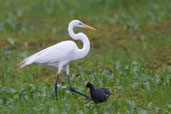
There are 4 sub-species of the Great White Egret. A. alba alba, the main Old World sub-species differs from A. alba egretta, the New World sub-species, as shown in these photos, in having a dark bill during the breeding season as opposed to a yellow bill with a dark tip. Outside the breeding season the bill is all yellow as seen in the second photo. Another feature of the breeding season is the ornamental plumes.

In Paris about 10,000 people were employed in this trade. In London, one firm alone used annually the plumes of over 200,000 slaughtered Great Egrets.
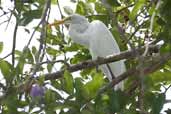

Payne, R.B. & C.J. Risley (1976) Systematics and evolutionary relationships among the herons (Ardeidae). Misc. Publ. Mus. Zool. Univ. Michigan 150:1-115
Sheldon, F.H. (1987) Phylogeny of herons estimated from DNA-DNA hybridization data. Auk 104(1):97-108.
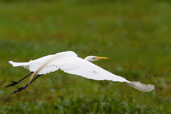
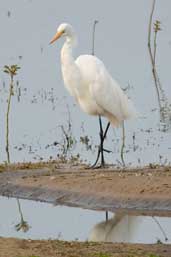

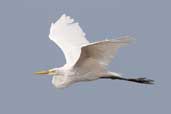
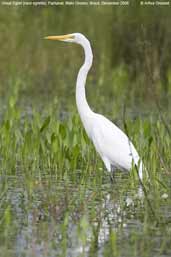

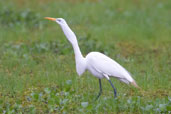
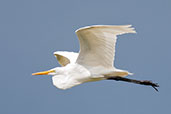
| Previous Page | Back to Index | Next Page |